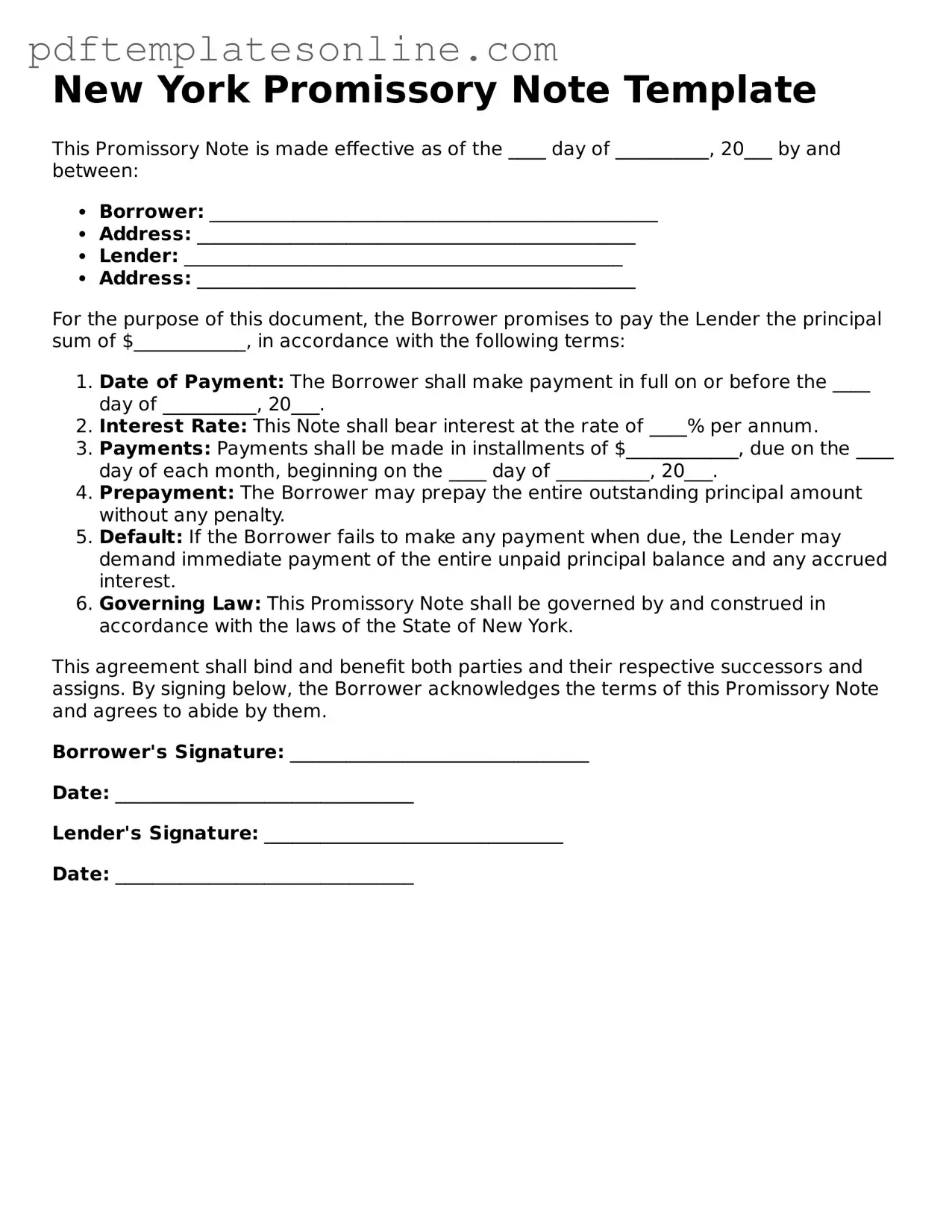Filling out a New York Promissory Note form can be a straightforward process, but many individuals make common mistakes that can lead to complications down the line. Understanding these pitfalls is essential for ensuring that the note is valid and enforceable.
One frequent mistake is failing to include the correct names of the parties involved. It is crucial that both the borrower and lender are clearly identified. If there are any discrepancies in names, it could create confusion about who is responsible for the repayment. Always double-check the spelling and ensure that the names match official identification.
Another common error is neglecting to specify the loan amount. The amount borrowed should be clearly stated in both numerical and written form. Omitting this detail can lead to misunderstandings regarding the terms of the loan. It is advisable to write the amount in words as well as numbers to avoid any ambiguity.
People often forget to include the interest rate, which is a critical component of the agreement. If the interest rate is not specified, the note may be considered incomplete. Additionally, if the interest rate is too high, it could violate usury laws, making the note unenforceable. Therefore, it is important to research and include a fair interest rate.
Another mistake involves the repayment terms. It is essential to outline how and when payments will be made. Whether the borrower will make monthly payments or a lump sum at the end should be clearly articulated. Lack of clarity in repayment terms can lead to disputes and financial strain.
Many individuals overlook the importance of including a date. The date on which the promissory note is signed is significant because it marks the beginning of the loan agreement. Without a date, it can be challenging to establish timelines for repayment and interest accrual.
Furthermore, some people fail to sign the document. A promissory note is not legally binding unless it is signed by the borrower. In some cases, lenders may also choose to sign the document for added security. Always ensure that all necessary signatures are present before finalizing the note.
Another issue arises when individuals do not keep a copy of the signed note. It is vital for both parties to retain a copy of the agreement for their records. Having a copy helps in case any disputes arise in the future, providing evidence of the terms agreed upon.
Lastly, individuals sometimes forget to have the document witnessed or notarized. While not always required, having a witness or notary public can add an extra layer of legitimacy to the agreement. This step can be especially important if the note is ever challenged in court.
